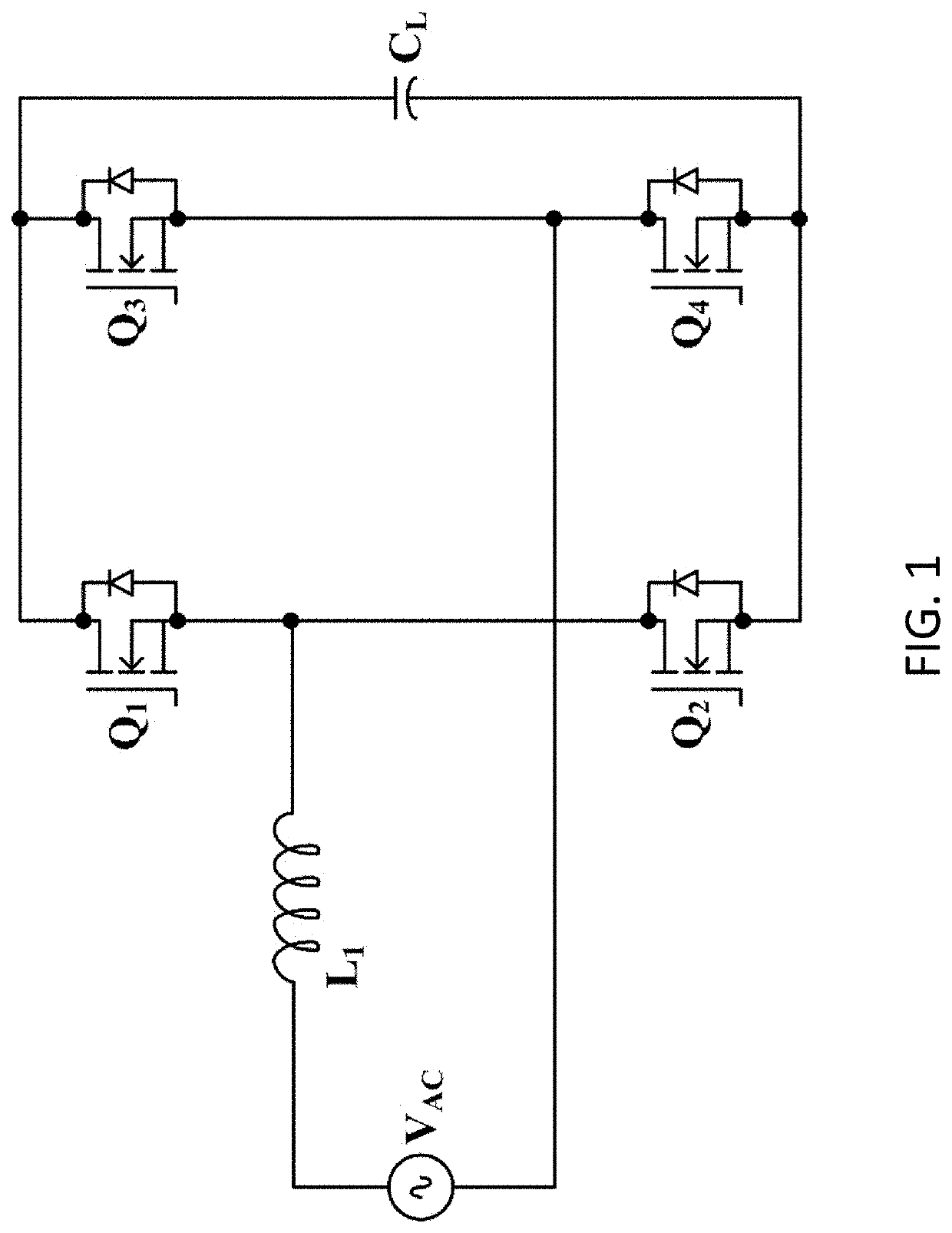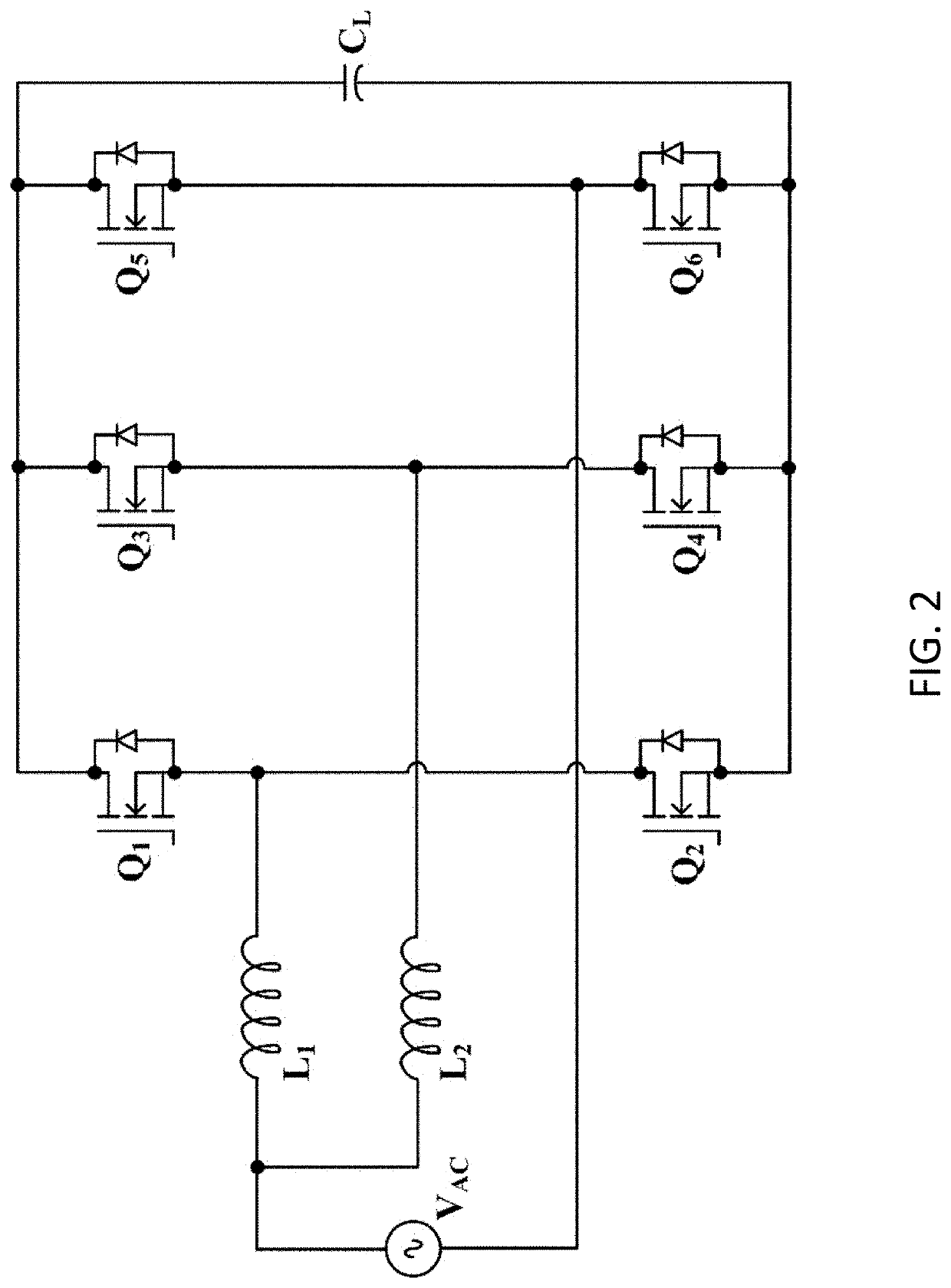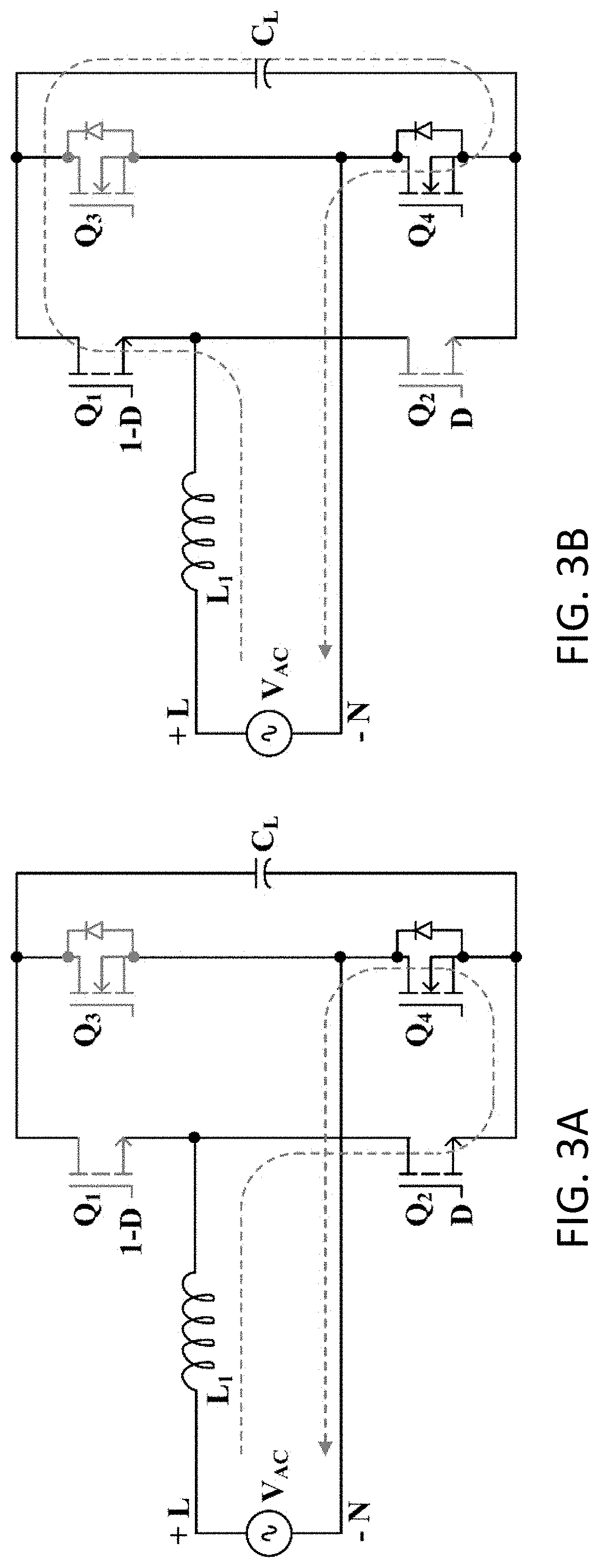Bootstrap pre-charge circuit in totem-pole power factor correction converter
- Summary
- Abstract
- Description
- Claims
- Application Information
AI Technical Summary
Benefits of technology
Problems solved by technology
Method used
Image
Examples
Embodiment Construction
[0024]FIG. 1 is a circuit diagram of a single-channel TPPFC boost converter according to a preferred embodiment of the present invention. In FIG. 1, the single-channel TPPFC converter includes an AC voltage input VAC, an inductor L1, switches Q1 and Q2 that can act like switching devices to control the flow of current, switches Q3 and Q4 that can act as line transistors in that the switches Q3 and Q4 are turned on and off at the input line frequency, usually about 50 Hz to about 60 Hz to mimic diodes, and a load capacitance CL. The switches Q1 and Q2 are connected in cascade, and the switches Q3 and Q4 are connected in cascade. The inductor L1 is connected between a terminal of the AC voltage input VAC and a node between the switches Q1 and Q2. The other terminal of the AC voltage input VAC is connected to a node between the switches Q3 and Q4. The load capacitance CL is connected in parallel with the switches Q1 and Q2 and with the switches Q3 and Q4. The switches Q1, Q2, Q3, and Q...
PUM
 Login to View More
Login to View More Abstract
Description
Claims
Application Information
 Login to View More
Login to View More - R&D
- Intellectual Property
- Life Sciences
- Materials
- Tech Scout
- Unparalleled Data Quality
- Higher Quality Content
- 60% Fewer Hallucinations
Browse by: Latest US Patents, China's latest patents, Technical Efficacy Thesaurus, Application Domain, Technology Topic, Popular Technical Reports.
© 2025 PatSnap. All rights reserved.Legal|Privacy policy|Modern Slavery Act Transparency Statement|Sitemap|About US| Contact US: help@patsnap.com



